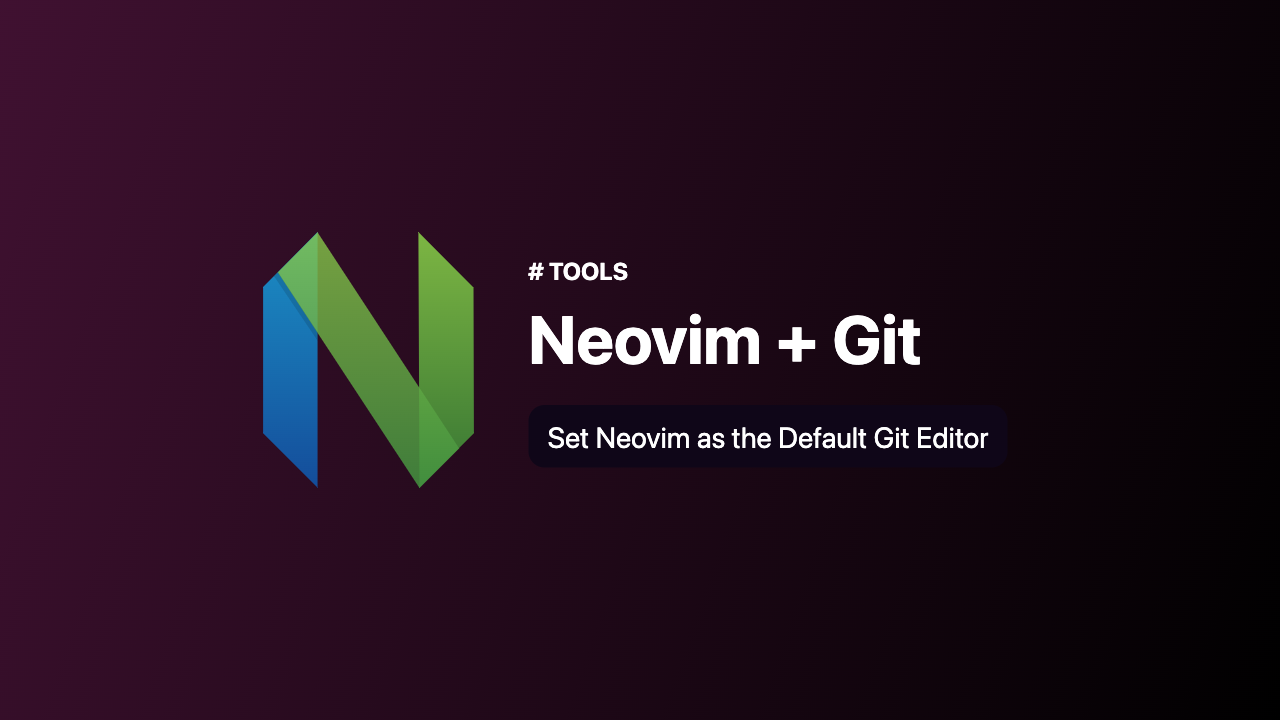
When working with Git, having a powerful and efficient text editor can significantly improve your workflow. Neovim, often referred to as nvim, is a modern, enhanced version of Vim that offers additional features and extensibility. In this guide, we’ll walk you through how to set Neovim as the default editor for Git and why it’s a great choice for developers.
Why Use Neovim with Git?
Before we dive into the steps, let’s quickly explore why Neovim is a popular choice for developers when working with Git:
- Speed and Performance: Neovim is lightweight and fast, making it ideal for quick Git commit messages and resolving merge conflicts.
- Customization and Plugins: Neovim supports a wide range of plugins and configuration options, allowing you to tailor the experience to your needs.
- Modern Features: With features like asynchronous execution and better support for modern terminal environments, Neovim offers a more streamlined experience compared to Vim.
Now, let’s get started with configuring Git to use Neovim as the default editor.
How to Set Neovim (nvim) as the Default Git Editor
Step 1: Install Neovim
If you haven’t installed Neovim yet, you can do so by following the instructions based on your operating system:
-
For Ubuntu/Debian:
sudo apt install neovim -
For macOS (using Homebrew):
brew install neovim -
For Windows: You can download Neovim from the official website or use a package manager like Scoop or Chocolatey.
Step 2: Set Neovim as the Default Git Editor
Once Neovim is installed, you can set it as the default editor for Git by running the following command in your terminal:
git config --global core.editor "nvim"This command sets Neovim as the default editor for Git globally, meaning it will be used for all Git operations that require an editor, such as commit messages, interactive rebase, and merge conflict resolution.
Step 3: Verify the Configuration
To ensure that Neovim has been set as the default editor, you can run the following command:
git config --global core.editorThis should output:
nvimIf you see this, you’re all set! Neovim is now your default Git editor.
Why Neovim is Perfect for Git Commit Messages
Neovim’s minimalistic yet powerful interface makes it an excellent tool for writing concise and clear Git commit messages. Here are a few reasons why you should consider using Neovim for this task:
-
Syntax Highlighting: You can enable syntax highlighting for Git commit messages with plugins like
vim-gitgutterorfugitive.vim, helping you visually structure your commits. -
Efficient Editing: Neovim’s modal editing system allows you to navigate and edit your commit messages quickly without taking your hands off the keyboard.
-
Custom Configuration: You can customize Neovim specifically for Git operations by adding custom keybindings, plugins, or even setting up a dedicated
.gitcommitconfiguration.
Bonus: Setting Neovim via Environment Variables
If you prefer to set Neovim as the default Git editor using environment variables, you can do so by adding the following line to your shell configuration file (e.g., .bashrc, .zshrc, or .bash_profile):
export GIT_EDITOR="nvim"After adding this, reload your shell configuration by running:
source ~/.bashrc # or ~/.zshrc depending on your shellThis method is useful if you want to temporarily set Neovim as the Git editor for specific sessions or users.
Common Git Commands That Use the Editor
Now that Neovim is set as your default Git editor, here are some common Git operations where you’ll be interacting with it:
-
Commit Messages: When you run
git commit(without the-mflag), Git will open Neovim to allow you to write a detailed commit message.git commit -
Interactive Rebase: When you run
git rebase -i, Neovim will open to let you modify the commit history interactively.git rebase -i HEAD~3 -
Merge Conflict Resolution: During a merge conflict, Git will open Neovim to help you resolve conflicts in files.
git mergetool
Conclusion
Setting Neovim as your default Git editor is a great way to boost your productivity, especially if you’re already familiar with Vim or Neovim. With its modern features, speed, and flexibility, Neovim can make writing commit messages, resolving merge conflicts, and performing interactive rebases a breeze.
By following the steps outlined in this guide, you can easily configure Git to use Neovim as the default editor and take full advantage of its powerful capabilities.